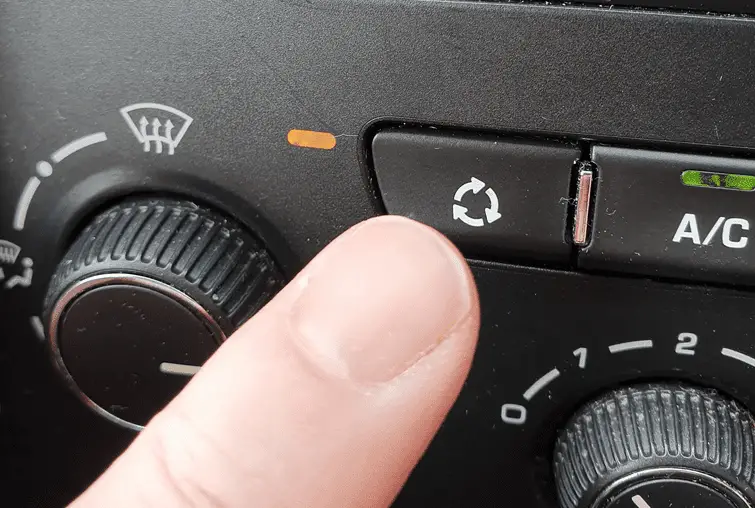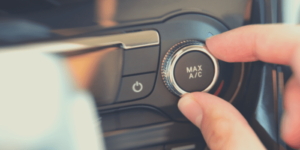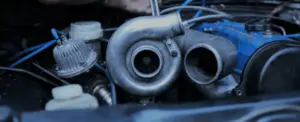Aircon in cars has only been around for 40 years – how did we cope before then? – but has become a must-have necessity.
When it gets slow to cool, we definitely notice it. There are many reasons – not all mechanical – why this happens.
Here we’ll examine each one and explore the steps you can take – many cheaply – to get colder air in your cabin more quickly.
Very briefly, though, the main reasons are
- Lack of gas in the system after recharge
- AC part fault – of which there are many
- System leak
Before we explore the reasons, it’s important to have a realistic expectation of how quickly the aircon can cool the cabin.
How Long Should It Take For A Car Aircon To Get Cold?
Car AC should cool the car within 5 minutes of you getting in and turning it on. There are caveats here. Much depends on the temperature in the car to start with. In extreme heat, it will take longer.
Remember that the temperature inside your car will be at least 10 F hotter than outside. This is because the air within is heated by the sun beating down on the windows.
Some drivers of Japanese cars have lamented the fact that their AC seems to be slower than other cars. Probably a massive generalization. There is no research on car AC reaction times, but some models will always be better at doing something – either accelerating, braking, or audio than others.
If you want to test the efficiency of your AC, turn it on for 3 minutes and place a thermometer by the vent. Ideally, you should look for a reading between 40 and 50o F.
Even when your car’s AC works well, it still has to get the cold air through the hoses and into your cabin. Your dash gets very hot in the summer, as do the hoses passing through it. These will have to be cooled too, before you get the full benefit.
If your car is constantly blowing hot air, then this is more relevant
Why Is My Cars AC Blowing Hot Air? – 6 Causes and Repair Prices
Causes of A Car AC Being Slow To Cool
We mentioned them above, but we’ll discuss them in more detail here.
Lack of Gas In the System
With the amount of car makes and models in the marketplace, there will be a large variation in the amount of gas – whether R-22 or R-32 – a system needs to fill up.
If you had the gas recharged by a professional, it’s really unlikely they didn’t put the correct amount in. However, if you have a receipt, it might show the amount of gas they charged you for. You could always cross-reference the spreadsheet in the link and see if it tallies up okay.
This is an unlikely cause but worth mentioning.
Car Aircon Part Fault
Things get a bit more in depth here, and unless you are a decent-level DIY mechanic, most of these faults will need to be confirmed and repaired by a qualified HVAC technician.
The most common two are:
Compressor Faulty
Your car’s aircon compressor is an expensive component with many moving parts that can go wrong.
Often they don’t fail completely – at least all of a sudden – but rather become less efficient at what they are meant to do.
The compressor’s job is to compress the coolant liquid before sending it on its journey to the condenser and evaporator.
Hers is a great video explaining How A Car’s Aircon Works
As you can imagine, that’s quite a task, and as it’s asked to do this almost continuously in summer, it is subject to wear and tear.
The parts that can fail within it are the clutch. This is operated by the serpentine belt and allows the AC system to be turned on and off. Without it, it would be on all the time. Once warmed up, it does work more effectively than when cold when. If it were failing, it would be more noticeable.
Any part that spins has bearings in them – wheels, for instance. – As the compressor spins, its bearings are prone to fail too. This is normally accompanied by squealing or grinding noises. If you don’t hear these, then it’s likely the compressor is fine.
Air compressors are expensive to replace, so no noise is good.
Air Blend Door Broken
A blend door is a pivot door. It swivels to divert warm or cold air into alternate paths allowing the correct temperature you want into the passenger cabin – whether warm or cold air.
When a car is cold, you’ll want the maximum heat to reach the passenger compartment. The blend door opens to send all of the warm air into the cabin. Once the car has heated up, the blend door can be kept open, allowing less heated air to reach the cabin.
A blend door should close whenever cool air is needed, minimizing heat from entering the passenger cabin. In older makes of cars, blend doors are operated by an actuator.
If the blend door is stuck in the partially open position, it can allow a small amount of warm air to pass when you don’t want it.
Aircon System Leak
Quite obvious, really, but that’s why it’s left to the end. Just like any low level of fluid in your car, there are consequences.
Low oil means a car overheats.
Low power steering fluid means the car can be difficult to turn etc.
Low gas will mean the aircon will take longer to cool the system down.
The gas can escape from many parts—the hoses between the compressor and the condenser, these two parts, and the evaporator.
Aircon leaks are difficult to identify visually as they are in a gaseous state at normal pressure and not liquid.
If you leak, the system will eventually lose all its gas and stop cooling the cabin completely if not fixed.
How to Find AC Leaks in Your Car (UV Dye)
This is a check and a fix you can do for yourself. The video above will talk you through what to do.
Practical Tips To Get Aircon Cold Quicker
The outside temperature is usually cooler than the temperature inside your car.
Therefore, open your windows and let the temperature lower a bit naturally. Now we’re not saying you won’t need your aircon if you do this, but if the initial temperature is lower by 10 o F to start, the AC won’t have to work as hard to get the temperature down to what you want it to be.
Once you’ve brought the temperature to the cooler outside, close the window and turn the AC on.

Once the AC has started work, consider recirculating the air inside your cabin rather than taking in air from the warmer outside.
In Conclusion
Car air conditioners stop working when the radiator fans turn on intermittently, the temperature vent doors are in the wrong place, the compressors are too weak, the outside air flap fails, or the coolant compressor valve doesn’t work. A car shop will figure out what’s wrong and fix it.













